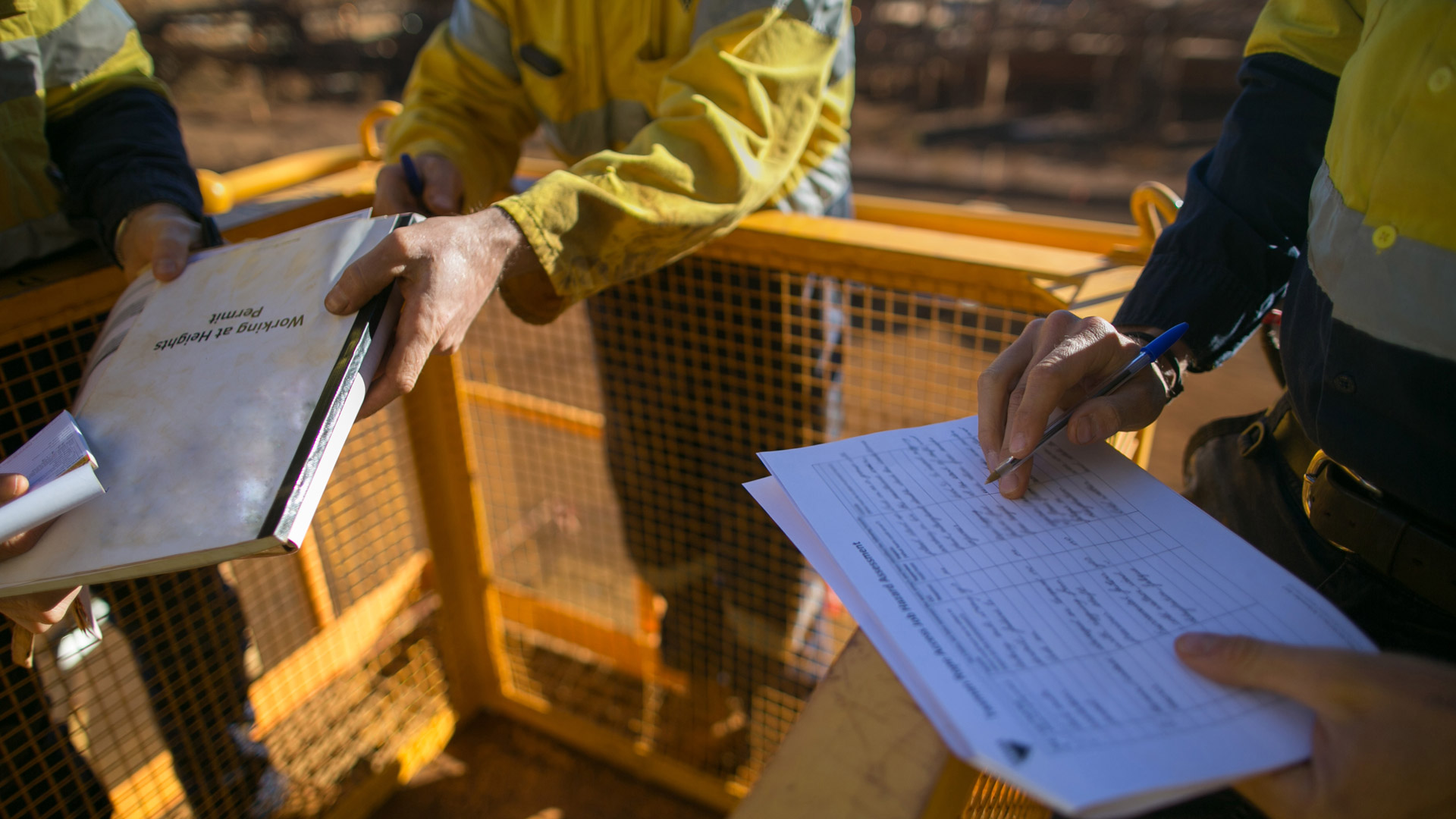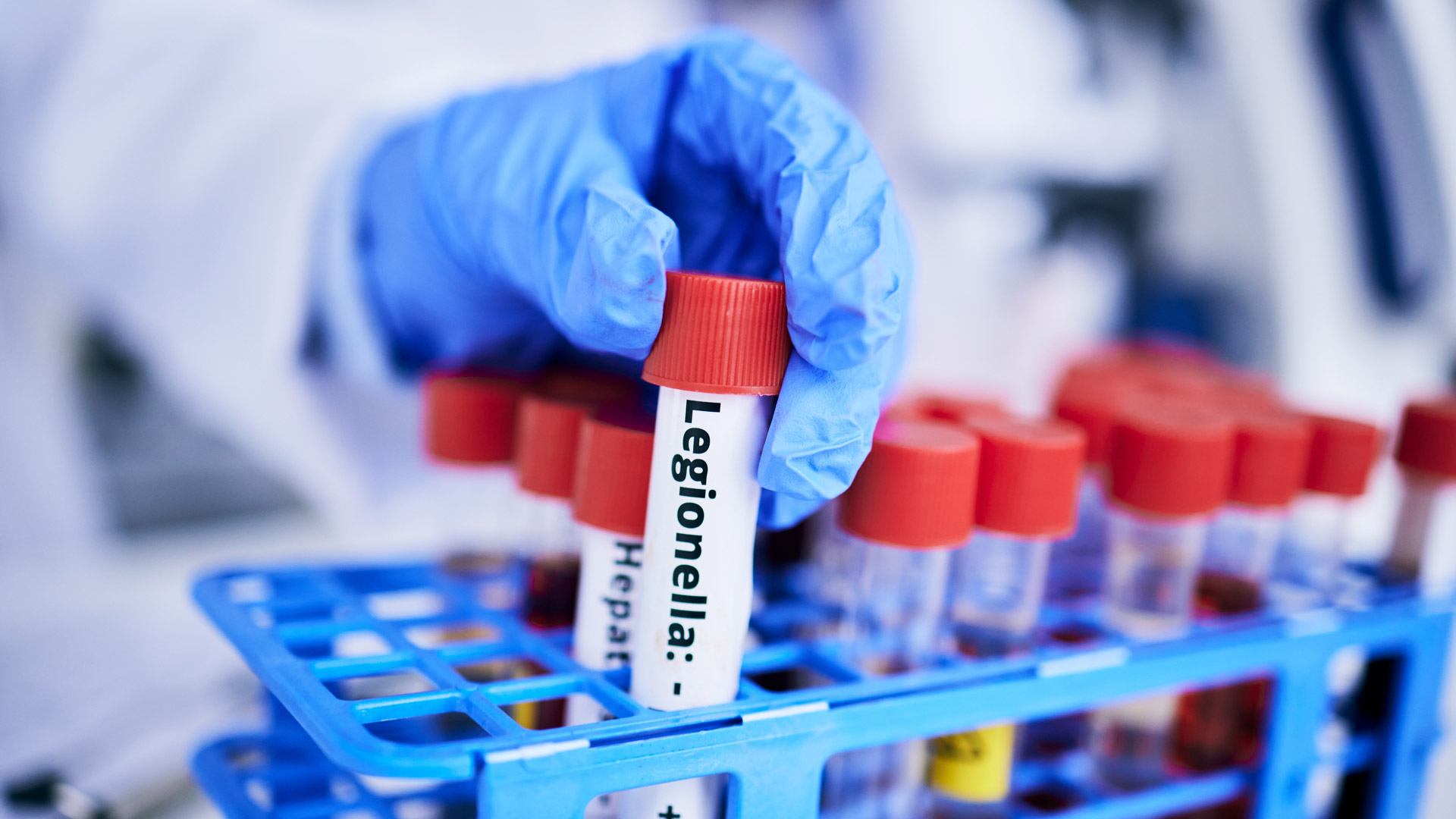INTRODUCTION
The dangers of legionella bacteria were thrown into the spotlight in 2023 when asylum seekers being housed on the Bibby Stockholm barge had to be rehomed because traces of legionella bacteria had been found in the on-board water system. A Home Office source told the BBC that results showing "low levels" of legionella in the water system on the barge were received by a contractor.
Further testing was carried out by Dorset Council's environmental health team and people were not moved back until the water supply was completely clear of contamination.
Legionella growth also became an issue for public concern during the COVID-19 pandemic, which resulted in many buildings being fully or partially closed for a long period of time. Buildings that have been idle for an extended period of time, for any reason, are more susceptible to legionella growth as critical residual disinfectant levels drop or disappear entirely in stagnant water.
This guide takes a closer look at what legionella bacteria is and how to prevent it developing into the dangerous Legionnaires’ disease.

WHAT IS LEGIONELLA?
Legionella is a bacteria commonly found in water. The bacteria multiply where temperatures are between 20-45°C; the bacteria are dormant below 20°C and do not survive above 60°C.
Legionella bacteria occur in most fresh water, usually at such low levels that they are harmless. Once inside a water system, however, if conditions favour growth, they can multiply to levels that pose risk of infection.
At temperatures below 20°C, legionella remain viable but dormant; from about 20°C to about 45°C they multiply, especially in the 32-42°C range, and undetectably low numbers can increase to significant levels in a few days. From about 45°C to 50°C, multiplication ceases but the bacteria are not killed; at temperatures above 50°C legionella start dying at a rate that increases with temperature. Almost 100% are killed within a few minutes at 60°C.
Any water system with the right environmental conditions could be a source for legionella bacteria growth. There is a reasonably foreseeable legionella risk if your water system:
- Has a water temperature between 20°C and 45°C.
- Creates and/or spreads breathable droplets, e.g. aerosols created by a cooling tower, or water outlets.
- Stores and/or re-circulates water.
- Is likely to contain a source of nutrients for the organism to grow, e.g. rust, sludge, scale, organic matter and biofilms.
The most common sources of legionella are in manmade water systems, including:
- Cooling tower and evaporative condensers.
- Hot and cold water systems.
- Spa pools.
There are also a number of other potential risk systems that may pose a risk to exposure to legionella, such as humidifiers, air washers, emergency showers, indoor ornamental fountains and the like.
All systems require a risk assessment, but not all systems will require elaborate control measures. A simple risk assessment, using the hierarchy of risk control, may show that the risks are low and being properly managed to comply with the law. In such cases, your assessment may be complete and you may not need to take any further action, but it is important to review your assessment regularly in case anything changes in your system.

DISEASES CAUSED BY LEGIONELLA BACTERIA
Legionellosis is a collective term for diseases caused by legionella bacteria including the most serious Legionnaires' disease, as well as the similar but less serious conditions of Pontiac fever and Lochgoilhead fever. Legionnaires' disease is a potentially fatal form of pneumonia and everyone is susceptible to infection.
Legionnaires' disease is contracted by inhaling airborne water droplets containing viable legionella bacteria. Such droplets can be created by hot and cold water outlets, atomisers, wet air conditioning plant and whirlpool or hydrotherapy baths.
Anyone can develop Legionnaires' disease, but the elderly, smokers, alcoholics and those with cancer, diabetes or chronic respiratory or kidney disease are more at risk.
Legionnaires' disease does not spread from person to person.

THE DUTY TO CONTROL LEGIONELLA EXPOSURE
Under general health and safety law (the Health and Safety at Work etc. Act 1974 and the Management of Health and Safety at Work Regulations), as an employer or person in control of a premises (e.g. a landlord), you have health and safety duties and need to take suitable precautions to prevent or control the risk of exposure to legionella.
You must understand how to:
- Identify and assess sources of risk.
- Manage any risks.
- Prevent or control any risks.
- Keep and maintain the correct records.
- Carry out any other duties you may have.
Carrying out a risk assessment is your responsibility and will help you to establish any potential risks and implement measures to either eliminate or control risks. You may be competent to carry out the assessment yourself but, if not, you should ask someone with the necessary skills to conduct a risk assessment.
This can be done by someone from within your own organisation or from someone outside, such as an external consultant.
The Approved Code of Practice: Legionnaires' disease: The control of Legionella bacteria in water systems (L8) contains practical guidance on how to manage and control the risks in your system.

HOW DO I IDENTIFY AND ASSESS SOURCES OF RISK?
You, or the person responsible for managing risks, need to understand your water systems, the equipment associated with the system such as pumps, heat exchangers, showers, etc. and its constituent parts. You need to identify whether they are likely to create a risk from exposure to legionella, and whether:
- The water temperature in all or some parts of the system is between 20°C and 45°C.
- Water is stored or re-circulated as part of your system.
- There are sources of nutrients such as rust, sludge, scale, organic matter and biofilms.
- The conditions are likely to encourage bacteria to multiply.
- It is possible for water droplets to be produced and, if so, whether they can be dispersed over a wide area, e.g. showers and aerosols from cooling towers.
- It is likely that any of your employees, residents, visitors, etc. are more susceptible to infection due to age, illness, a weakened immune system, etc. and whether they could be exposed to any contaminated water droplets.
Your risk assessment should include:
- Management responsibilities, including the name of the competent person and a description of your system.
- Competence and training of key personnel.
- Any identified potential risk sources.
- Any means of preventing the risk or controls in place to control risks.
- Monitoring, inspection and maintenance procedures.
- Records of the monitoring results and inspection and checks carried out.
- Arrangements to review the risk assessment regularly, particularly when there is reason to suspect it is no longer valid.
International Workplace has a training course for Legionella awareness.
If you conclude that there is no reasonably foreseeable risk or the risks are low and are being properly managed to comply with the law, your assessment is complete. You may not need to take any further action at this stage, but any existing controls must be maintained and the assessment reviewed regularly in case anything changes in your system.

HOW DO I PREVENT OR CONTROL THE RISK?
You should consider whether you can prevent the risk of legionella in the first place by considering the type of water system you need, e.g. whether it is possible to replace a wet cooling tower with a dry air-cooled system. The key point is to design, maintain and operate your water services under conditions that prevent or adequately control the growth of legionella bacteria.
You should, as appropriate:
- Ensure that the release of water spray is properly controlled;
- Avoid water temperatures and conditions that favour the growth of legionella and other microorganisms;
- Ensure water cannot stagnate anywhere in the system by keeping pipe lengths as short as possible or by removing redundant pipework;
- Avoid materials that encourage the growth of legionella;
- Keep the system and the water in it clean; and
- Treat water to either kill legionella (and other microorganisms) or limit their ability to grow.
If you identify a risk that you are unable to prevent, you must introduce appropriate controls. You should introduce a course of action that will help you to control any risks from legionella by identifying:
- Your system, e.g. developing a written schematic;
- Who is responsible for carrying out the assessment and managing its implementation;
- The safe and correct operation of your system;
- What control methods and other precautions you will be using; and
- What checks will be carried out to ensure risks are being managed and how often.

TEMPERATURE MANAGEMENT
The primary method used to control the risk from legionella is water temperature control. Cold and hot water systems are controlled by keeping the cold water cold and the hot water hot, maintaining a moderate water throughput to displace any water that would otherwise have time for legionella to multiply, and keeping the water and system reasonably clean.
Employers and premises managers should recognise the importance of being mindful of the impact hot weather can have on the presence of legionella in water systems.
Legionella thrives when the weather hots up as it can raise the ambient temperature of stored cold water. It’s important to check temperatures during warm weather and, if your thermometer reading is on the rise, invest in improved insulation on pipes and tanks. This will help to regulate and reduce the temperature, even on very hot days. Heat rises, so loft spaces can get particularly warm during a heat wave. Alternatively, if your water storage tank is outside, make sure it isn’t in direct sunlight by installing an adequate shade.
If risks of exposure to legionella bacteria are identified, employers must consult employees or their representatives on the measures and actions taken to control the risks.
If the assessment shows that there is a reasonably foreseeable risk and it is reasonably practicable to prevent exposure or control the risk from exposure, the dutyholder should appoint a competent person or persons to help undertake the measures needed to comply with the requirements in the Control of Substances Hazardous to Health Regulations 2002 (COSHH).
These Regulations require employers to prevent, or where this is not reasonably practicable, adequately control, the exposure of any employees to substances hazardous to health. Employers are also required to maintain, examine and test control measures and, at suitable intervals review and, if necessary, revise those measures. They must also keep suitable records of examinations, tests and repairs of control measures.

WHAT RECORDS DO I NEED TO KEEP?
If you have five or more employees, you have to record any significant findings, including any groups of employees identified as being particularly at risk and the steps taken to prevent or control risks. If you have fewer than five employees, you do not need to write anything down, although it is useful to keep a written record of what you have done.
Records should include details about:
- The person or people responsible for conducting the risk assessment, managing, and implementing the written scheme;
- Any significant findings of the risk assessment;
- The written control scheme and its implementation; and
- The results of any inspection, test or check carried out, and the dates. This should include details about the state of operation of the system, i.e. in use/not in use.
These records should be retained throughout the period for which they remain current and for at least two years after that period. Records kept in accordance with the last bullet point above should be retained for at least five years.
Other duties
Under the Notification of Cooling Towers and Evaporative Condensers Regulations 1992, you must notify your local authority in writing if you have a cooling tower or evaporative condenser on site, and include details about where it is located. You must also tell them if/when such devices are no longer in use.
Although less common, other systems that do not rely solely on the principle of evaporation are dry/wet coolers or condensers. These systems may not require notification under the Notification of Cooling Towers and Evaporative Condensers Regulations 1992 (NCTEC) but it is important to assess the system against the notification requirements defined in NCTEC.
In addition, under the Reporting of Injuries, Diseases and Dangerous Occurrences Regulations (RIDDOR), you must report any cases of Legionellosis in an employee who has worked on cooling towers or hot and cold water systems that are likely to be contaminated with legionella.

CASE LAW
A plastics manufacturing company was fined after it put workers and the public at risk of being infected with legionella bacteria. The HSE investigated Riaar Plastics Limited after members of the public became infected with Legionnaires’ disease in September 2020. Five people were infected; one person was taken to intensive care and put on a ventilator.
Riaar Plastics Limited was fined for failing to manage the risk of legionella. The HSE found the water-cooling towers inherited by Riaar Plastics Limited at its site were in an extremely poor condition. This allowed legionella bacteria to grow in the water-cooling towers and pipes, exposing employees and members of the public to risks of significant ill health.
The company pleaded guilty to breaching Section 2(1) and 3(1) of the Health and Safety at Work etc. Act 1974. It was fined £50,000 and ordered to pay £11,000 in costs on 2 June 2023.
This prosecution was led by HSE principal inspector Jenny Skeldon and HSE senior enforcement lawyer Kiran Cassini. Jenny Skeldon said:
“The condition of the cooling towers at this site was the worst I had ever seen. The legionella exposure risk to employees, site visitors, neighbouring duty holders and members of the public was extreme in nature. It is really important that proactive management of the risk from legionella bacteria is taken seriously. There are well publicised and simple precautions for companies to take, and if followed, will ensure that employers manage and control the risk.”
In another case, a facilities manager was unfairly constructively dismissed after raising concerns about the potential for legionella bacteria to develop in school water supplies, an Employment Tribunal ruled.
Bev Parkinson initially expressed his concerns in a report, explaining that the design and management of water systems at some Highland Council schools made the chances of legionella bacteria occurring "more likely". When the bacteria was then detected in water tests at five schools in the local authority area in 2019, Mr Parkinson submitted his report to Highland Council.
His employer, Mears Facilities Management, argued the report had brought the company into disrepute and Mr Parkinson was subsequently suspended and disciplined. The Tribunal heard he then felt forced to resign.
The judge found that Mr Parkinson’s manager, Tom Griffin, who had been aware of the issues for some time, showed a “surprising lack of urgency” in dealing with the problems. The senior manager claimed the council employee was being “overzealous” and advised that staff at the school concerned should run the taps to clear any dirt. Following further concerns, Mr Parkinson arranged for further water samples to be taken at Kinlochleven High School in April 2019 and some tested positive for legionella.
Other schools were then sampled and a further four tested positive for the bacteria. The claimant updated Mr Griffin who appeared unconcerned. Mr Griffin’s position was that it was normal to get positive results from time to time.
The judge concluded that as the designated "responsible person, potentially someone who carried legal liability for the continuing state of affairs", it was clear why Mr Parkinson would have been concerned with the situation. The company was ordered to pay Mr Parkinson almost £9,000.

Key takeaways
-
Legionella is a bacteria commonly found in water. The bacteria multiply where temperatures are between 20-45°C; the bacteria are dormant below 20°C and do not survive above 60°C.
-
Legionnaires' disease is contracted by inhaling airborne water droplets containing viable legionella bacteria. Legionnaires' disease is a potentially fatal form of pneumonia and everyone is susceptible to infection.
-
Any water system with the right environmental conditions could be a source for legionella bacteria growth. The primary method used to control the risk from legionella is water temperature control.
-
All systems require a risk assessment but not all systems will require elaborate control measures.
-
As an employer or person in control of a premises (e.g. a landlord), you have health and safety duties and need to take suitable precautions to prevent or control the risk of exposure to legionella.
-
Carrying out a risk assessment is your responsibility and will help you to establish any potential risks and implement measures to either eliminate or control risks.
-
You should consider whether you can prevent the risk of legionella in the first place by considering the type of water system you need.
-
If risks of exposure to legionella bacteria are identified, employers must consult employees or their representatives on the measures and actions taken to control the risks.
-
If you have five or more employees, you have to record any significant findings, including any groups of employees identified as being particularly at risk and the steps taken to prevent or control risks.
SOURCES:
You may also be interested in
RELATED CONTENT
RELATED COURSES

The Control of Substances Hazardous to Health (COSHH) course helps learners carry out work involving hazardous substances safely.

The Emergency first aid course offers learners the skills and knowledge to deal with emergency first aid situations at work.

The Legionella course ensures people understand the risk of legionella and are aware of the requirements of the L8 ACoP.

Introduction to health and safety gives learners a basic introduction to managing safety in their workplace.

A facilities manager was unfairly constructively dismissed after raising concerns about the potential for Legionella bacteria to develop in school wat...

Employers and premises managers are being warned of the importance of being mindful of the impact hot weather can have on the presence of Legionella i...

Symptoms of Legionnaires Disease are similar to those of COVID-19, it has been revealed.

The migrants being housed on the Bibby Stockholm barge in an effort to cut the cost of housing asylum seekers, have all been removed after traces of L...
